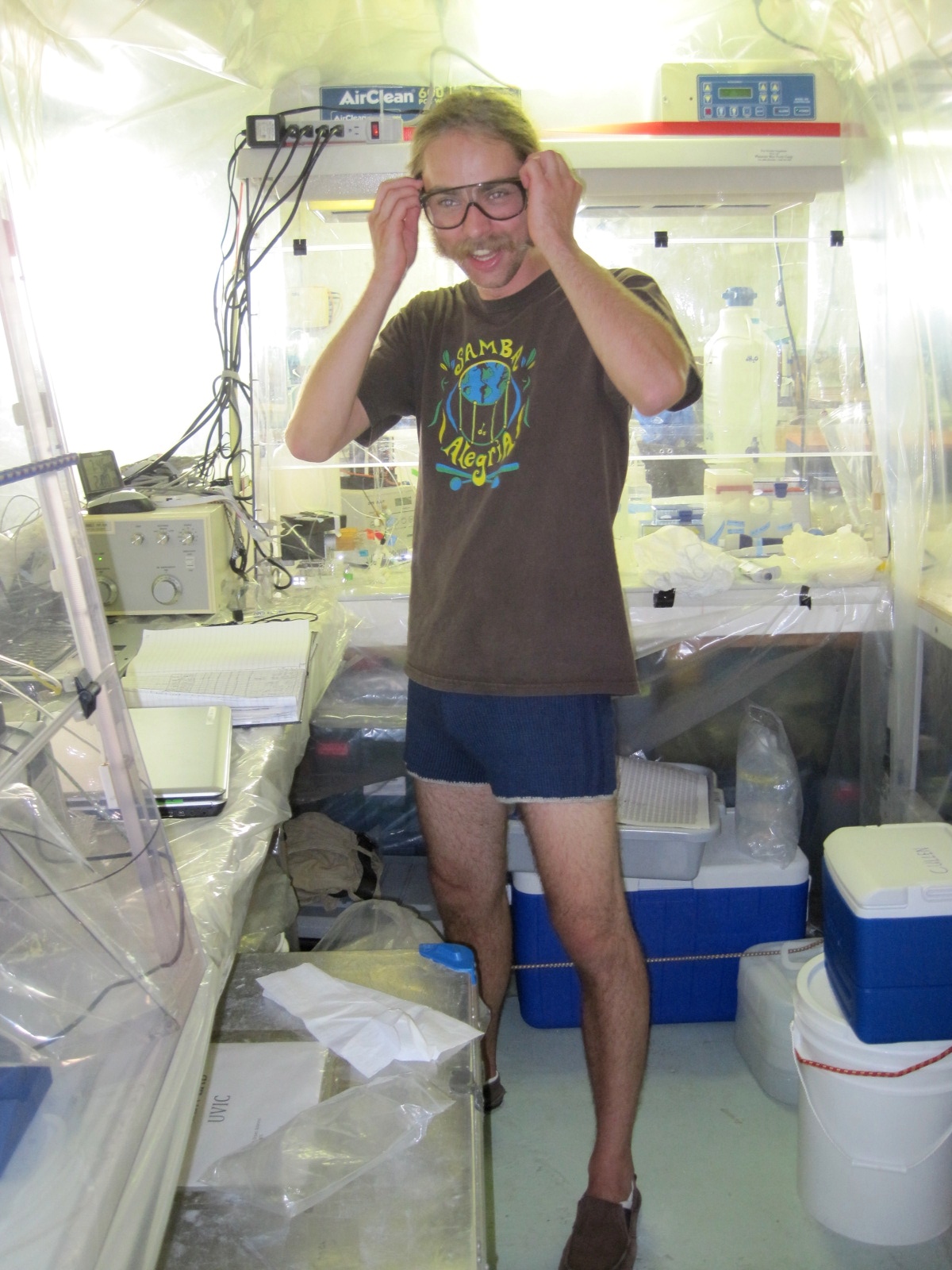 |
| Me nerding out on chemistry (unfortunatelly not beer chemistry here) |
Water Chemistry: A lot of this information can be found in the Water book by Palmer and Kaminski that was recently published by Brewers Publications. This book does a good job of compiling the information out there on brewing water while correcting some commonly-held misconceptions. The book also does a good job of remaining approachable/understandable while getting into brewing water chemistry. I talked a bit about alkalinity and it's relation to brewing. I thought the residual alkalinity figure on p. 69 compiled a lot of the important concepts into one simple figure (I don't want to infringe on any copyrights so I won't reproduce it here). For those without the book, I'd recommend it, especially if you are brewing with grain and are interested in really taking control of your brewing process.
Hop Antibacterial properties: We all know that hops carry antimicrobial properties, and the specific mechanisms aren't necessarily important for the practical brewer. Nevertheless, I think the mechanistic antibacterial activity is pretty interesting. Hop acids (iso-alpha primarily in modern beer, but beta-acids are also antimicrobial) have antimicrobial properties against gram positive bacteria (this includes bacteria such as Pediococcus and Lactobacillus but not Acetobacter). Iso-alpha acids are ionophores, meaning that they disrupt the chemical gradients (specifically the proton gradient) across bacterial cell membranes. The acids leak into the cell, lose a hydrogen ion and then migrate out of the bacteria cell across the cell membrane. I think the really funky stuff comes in with bacteria that are resistant to iso-alpha acids. Resistance appears to be specific to hop acids and it is stably encoded on chromosomal DNA (in contrast to some of the drug-resistant characteristics of other bacteria such as some human pathogens). What this means to the non-microbiologist is that the bacteria that are able to resist the antimicrobial characteristics of hop acids can specifically recognize hop acids and remove them from the cells. Furthermore, the bacteria keep this genetic information to recognize these hop acids even if they haven't been exposed to hop acids for a long time. But fortunately for brewers it also means that this secret hop-resistant information which some bacteria have is not easily transferred to other bacteria. This 2003 paper by Sakamoto and Konings details all of this quite nicely. (I know sometimes journal access can be tricky for those not connected with a subscriber, but I imagine some of you out there might theoretically know someone with access. In addition, paper authors are often willing to share their papers with interested folks if you contact them.)
Hop composition comparison - Old and new German and North American hops:
I use the term old North American hops a bit loosely here I suppose. I wanted to compare landrace hops such as Tettnanger and Hallertaur Mittelfruh with newer products from German hop breeding such as Saphir. For the corollary with North American hops I chose Cascade compared to Simcoe and Citra. While Cascade is still quite young, it shows the difference between old and new hop breeding trends (Cohumulone percentage and oil levels). While some modern research has counteracted the commonly held belief that high cohumulone hops are harshly bitter, modern hop breeding has still kept cohumulone levels in mind and newer hop varieties have much lower cohumulone percentages. Here is a table detailing some different hop varieties in their acid and oil composition. Note that the German hops show much higher levels of the sesquiterpene oils (humulene and b-caryophyllene) which are perceived to be spicy while the North American hops show much higher myrcene levels.
| Characteristics of German and North American Hop varieties (usahops.org, deutscher-hopfen.de, Yakima Chief) |
Flocculation: The Journal of the Institute of Brewing recently celebrated it's 125th Anniversary and published some nice reviews about brewing topics. One of these reviews dealt with flocculation. It detailed 3 main yeast flocculation phenotypes (behaviors). Two of these three (and the two which are better understood) rely on yeast proteins binding sugar residues on the cell walls of other neighboring yeast cells. Depending on which sugars can be bound, this influences the onset of flocculation. For example, if maltose if one of the sugars that the flocculation proteins can bind, flocculation will not occur until all the maltose in the wort is used up and the yeast can actually find the sugars attached to adjacent yeast cells. But if flocculation only depends on a sugar that isn't very prevalent in wort such as mannose, then flocculation may occur earlier while there are still fermentable sugars in the wort. I used to think about flocculation only about the yeast settling out of suspension, but technically speaking flocculation in the clumping together of yeast cells. These clumps, or flocs, can then rise to the surface when they are carried up by CO2 released during fermentation and show up in the krausen we are used to from ale fermentations.
Alright, I think this is enough nerdy chemistry from one post. If it was too much, take another look at the picture of me at the start and maybe you'll feel better. If it wasn't enough for you let me know and we nerd out a bit more.
No comments:
Post a Comment